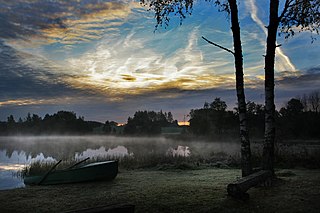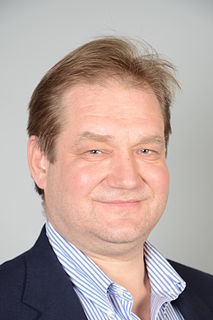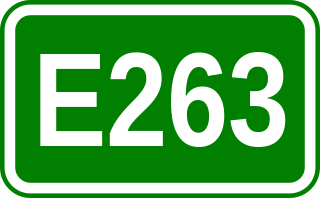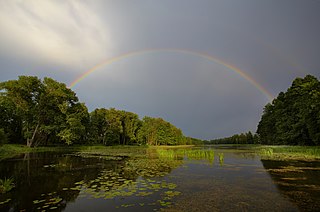
Meelis Kanep (born 27 May 1983) is an Estonian chess grandmaster. [1]
Born in Võru, Võru County, Kanep was the Estonian champion in 2004, 2005 and 2007 and winner of the Paul Keres Memorial Tournament in Tallinn, Estonia in 2005. [2]

Meelis Kanep (born 27 May 1983) is an Estonian chess grandmaster. [1]
Born in Võru, Võru County, Kanep was the Estonian champion in 2004, 2005 and 2007 and winner of the Paul Keres Memorial Tournament in Tallinn, Estonia in 2005. [2]

Võru County, or Võrumaa; officially, is a county in Southern Estonia. It is bordered by Valga County and Põlva County and is the only Estonian county bordering two countries - Latvia in the south and Russian Federation in the east.

Võro is a language belonging to the Finnic branch of the Uralic languages. Traditionally, it has been considered a dialect of the South Estonian dialect group of the Estonian language, but nowadays it has its own literary standard and is in search of official recognition as an indigenous regional language of Estonia. Võro has roughly 75,000 speakers (Võros) mostly in southeastern Estonia, in the eight parishes of the historical Võru County: Karula, Harglõ, Urvastõ, Rõugõ, Kanepi, Põlva, Räpinä and Vahtsõliina. These parishes are currently centred in Võru and Põlva counties, with parts extending into Valga and Tartu counties. Speakers can also be found in the towns of Tallinn and Tartu and the rest of Estonia.

Võru is a town and a municipality in south-eastern Estonia. It is the capital of Võru County and the centre of Võru Parish.

Haanja is a village in Rõuge Parish, Võru County, in southeastern Estonia. It's located 16 km south from the town of Võru. Between 1991–2017 the village was the administrative centre of Haanja Parish. The village had a population of 191.

Ivari Padar is an Estonian politician. He is a former Minister of Finance, Minister of Agriculture and chairman of the Estonian Social Democratic Party.

Saru is a village in Rõuge Parish, Võru County in southeastern Estonia. Between 1991–2017 the village was located in Mõniste Parish.

Väimela is a small borough in Võru Parish, Võru County in southeastern Estonia. Väimela is situated 5 km from Võru it is also, first mentioned in historical materials in the year 1403. Võru County Vocational Training Centre is situated in Väimela.

Kanepi is a small borough in Kanepi Parish, Põlva County in southeastern Estonia.

European route E 263 is a Class B road part of the International E-road network. It runs only through Estonia, begins in Tallinn and ends in Luhamaa, Võru County, and shares exactly the same route as Estonian national road 2.

Võru Parish is a rural municipality of Estonia, in Võru County. It has a population of 4,770 and an area of 202.23 km².

Kose is a small borough in Võru Parish, Võru County, in southeastern Estonia. It has a population of 615.
Meelis is an Estonian masculine given name.

Navi is a village in Võru Parish, Võru County in southeastern Estonia. It is located just northwest of the town Võru, north of the Tallinn–Tartu–Võru–Luhamaa road (E263). Navi has a population of 263.

Paidra is a village in Lasva Parish, Võru County in southeastern Estonia. It's located about 13 km (8 mi) northeast of the town of Võru, by the Võru–Räpina road. The Võhandu River passes through Paidra. There's also a lake situated on the eastern side of the village. Paidra has an area of 5.8 km2 and a population of 42.
Gunnar Uusi was an Estonian chess player who won the Estonian Chess Championship six times.
Aarne Hermlin was an Estonian chess player who won the Estonian Chess Championship. He was a FIDE master and an International Correspondence Chess Master, which he was awarded in 1986.
Cannabis in Estonia is illegal, but possession of up to 7.5 grams is considered an amount for personal use, and is punished with a fine. Large amounts and distribution are criminal offences and punishable with a custodial sentence of up to 5 years. In 2018, the then recently merged municipality of Kanepi in southern Estonia adopted the cannabis leaf as the symbol on its flag and coat of arms. Kanep is the Estonian word for cannabis. Hemp was historically used as a product in shipbuilding. It was traded from the eastern Baltic within the Hanseatic League and in the sixteenth century directly to the Netherlands for this purpose.
Listaku may refer to several places in Estonia:
Raudsepa may refer to several places in Estonia:
Udsali may refer to several places in Estonia:
| This Estonian biographical article is a stub. You can help Wikipedia by expanding it. |